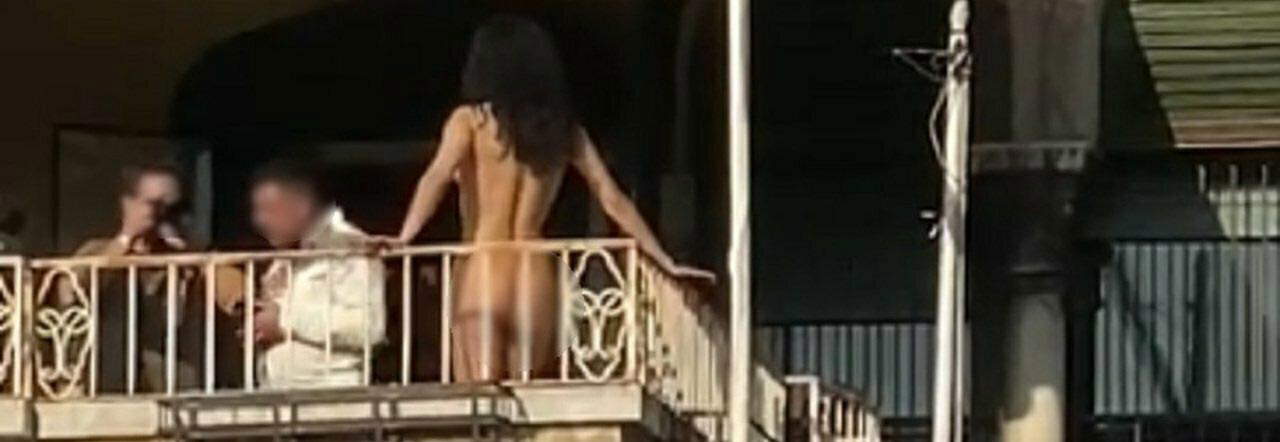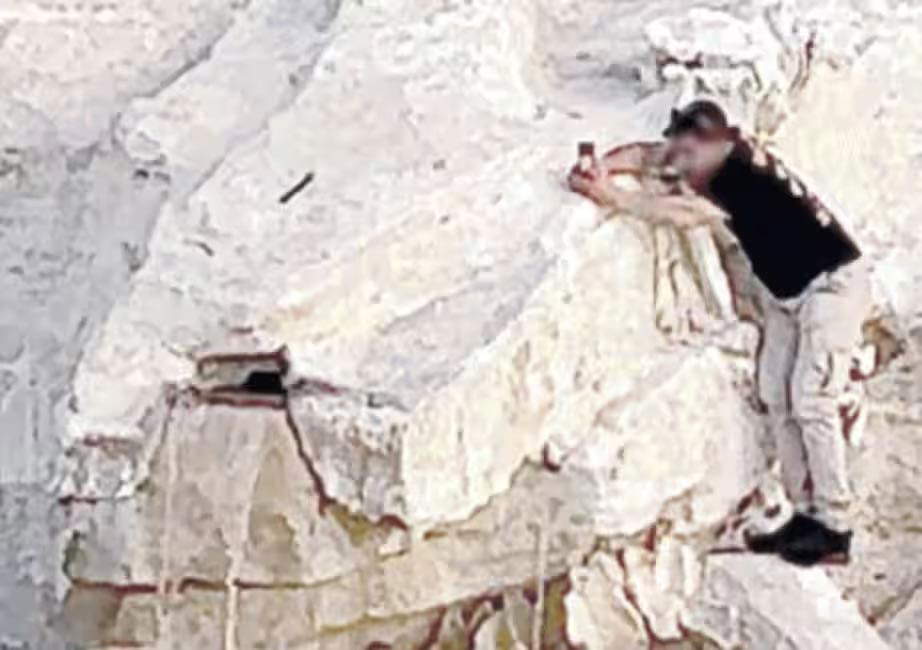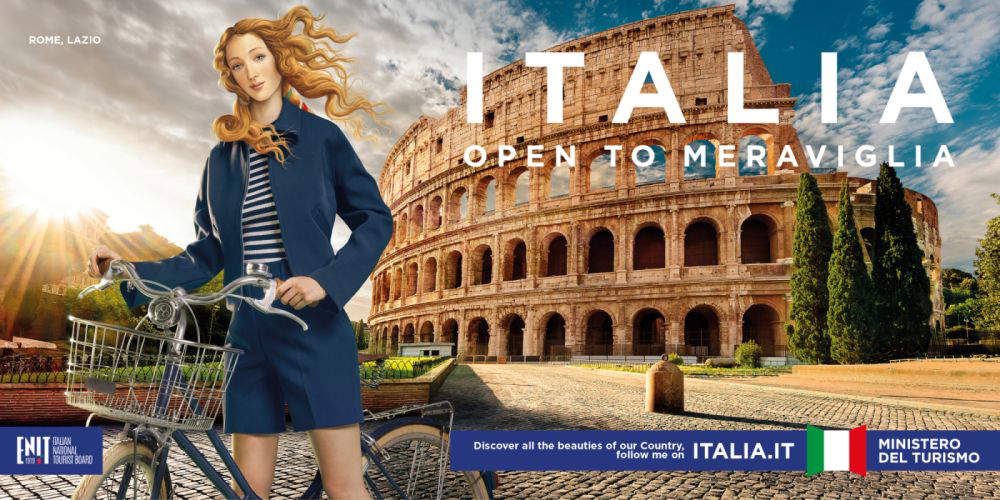And while everyone was talking about Botticelli’s Venus and how wrong, unsuitable, inappropriate, embarrassing, cringeworthy, inappropriate the campaign signed by the Armando Testa studio for the Ministry of Tourism was, the tourist season has begun. Perhaps not everyone has noticed, but April has just ended, the first full month of spring, the month when the bulk of the tourists who come to Italy each year begin to move through our cities and towns. And taking a look at the local chronicles of some of the most important cities and tourist destinations in our country, it would seem that this season will not fail to be characterized by the same problems as always: in particular, by the triad of overcrowding, degradation and damage to heritage.
If we wanted to find a date from which to start the sequence of unedifying episodes that have characterized this very intense month that has just ended, we could begin with April 8, when we learned of the closure to the public of the Monesteroli staircase, near Cinque Terre, due to a subsidence that affected some of the 1,200 stone steps that make it a steep and spectacular path leading directly to the sea. Tourists probably had little, perhaps even nothing, to do with it in this case, but what is certain is that the subsidence of those steps reminds us how fragile our heritage is. Regardless of the large flows of visitors. If, however, to the flow of centuries we also add a few thousand tourists, you can bet that the omelette is assured.
For a few years now, in fact, the same motif has been resonating over and over again: tourism is a resource, but if not managed it turns into a problem. So here are the first signs of what will be yet another tourist season marked by the usual arguments: tourism yes tourism no, quality tourism yes, hit-and-run tourism no, and so on. In the meantime, however, time passes and tourists arrive. Indeed: a lot of them come, because they like our country, and when the calendar approaches the first public holidays, the first problems also begin. Which as per tradition always start from the sea. Indeed: from the seaside villages, starting with those in the Cinque Terre. There, so many tourists have arrived that the mayors of those villages have asked the government for a special law to regulate visitor flows. Riomaggiore, Manarola, Corniglia, Vernazza, and Monterosso taken by storm, chaos on railway platforms, and +12 percent more tourists than in 2019. In nearby Portofino, the music doesn’t change: narrow streets crammed to the point of improbability, so much so that the mayor launched an ordinance that will prohibit tourists from stopping in the little square by the sea and on the Umberto I pier. There will then be just enough time for a selfie, and then the police officers will be able to apply fines ranging from 68 to 275 euros: it is therefore impossible to linger to see the landscape and reconcile with nature. Those who want to visit Portofino will only be able to do so in procession mode. Good but not great: the surgery was successful, but the patient died.



And in the midst of such a crowd, how to manage to take a decent selfie? That’s probably what thought that visitor who decided to climb the Trevi Fountain in Rome on Wednesday, April 25, to find the right angle in order to take some nice souvenir photos. However, we don’t know if he was identified and fined as happened instead to that English tourist who, after taking off his centurion armor (that’s how he was soberly dressed), dived a few days earlier into the same fountain. For him 450 euros fine and for us the recurring feeling of helplessness.
Also getting pissed off are the tour guides, who in the midst of so many people are unable to organize guided tours for their groups. The guides, like the mayors of the Cinque Terre, are also calling for flow regulation because it is impossible to move among the more than 100,000 visitors who flocked to the Uffizi over the April 25 bridge, with some works becoming unapproachable due to the crush of selfie-takers. A harmless fad that becomes unmanageable, however, if some holidays that would already be red-ticket days for major museums come to coincide with free admission days.
For Florence then, the problem is not limited to a few specific days or periods, but lasts all year round, with mass tourism that is transforming the historic center in profound ways: housing units become B&Bs, businesses become sandwich stores, stores turn into souvenir bazaars, and the mayor has only to call for a special law to regulate short rentals. With statements that come punctually after April 25. Of the series: now let’s get rid of the torpedoes, for we don’t want to end up like Venice.
And it is precisely from Venice that we get the latest news worth mentioning: it was April 27 when a model had herself photographed completely naked, choosing as her set a beautiful balcony overlooking the courtyard of the Royal Palace. For her and the photographer a 750 euro fine, for us the usual perception that in Italy everyone can come and do a little what they like. As those tourists caught in March diving into the canals directly from the roofs of the palaces must have thought, or those caught in August last year water skiing in the Grand Canal.
And the list would be long, indeed: very long. We will stop here, and simply ask: now that the recreation is over (the reference of course is to the controversy over Armando Testa’s Venus), can we come back or start addressing somewhat more serious issues? A Venus on a bicycle printed on a poster that will last a year should not be the first of our problems. The season has begun and tourists are coming, will continue to come in droves. What will they find? Will they find a country that is welcoming, with infrastructure that holds its weight, with receptive systems that work, with cities that are organized and efficient, where every effort is made to avoid rescues, degradation, incivility? Most importantly, what will they leave us with? In a nutshell: can we handle them or will we be overwhelmed as usual? Do we need more tourists or not?
Warning: the translation into English of the original Italian article was created using automatic tools. We undertake to review all articles, but we do not guarantee the total absence of inaccuracies in the translation due to the program. You can find the original by clicking on the ITA button. If you find any mistake,please contact us.